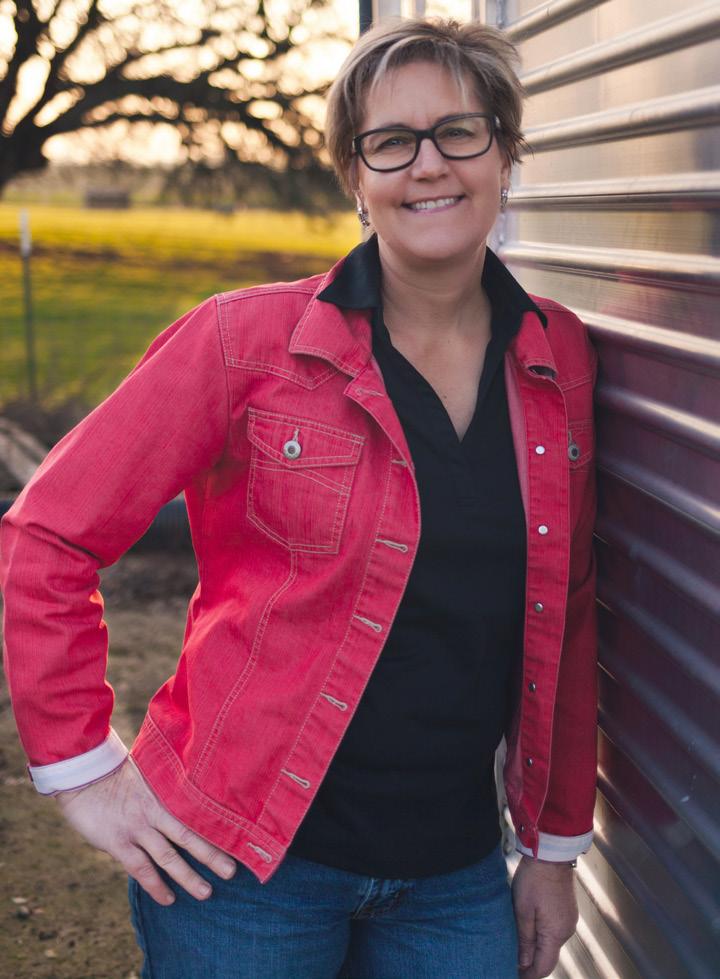
3 minute read
Outstanding Educator Award Winner Embodies CFT Pillars
are determined to maximize available farmland statewide by educating the next generation.
Promote Agriculture Education
Advertisement
Our Orange You Glad We Have Farmland curriculum and activity seeks to teach students about the importance of farmland. Specifically, we discuss how much land is ideal for growing the food that feeds them and others worldwide. Students also learn how they can be good stewards of the land.
“Knowing the importance of keeping farmland healthy by participating in recycling programs, water conservation, and not littering can help nurture the land to produce the food that feeds the world,” noted our program partners. “When farmland is protected, we all benefit by having food to eat and natural resources, like wildlife, that farmland provides.”
Anyone and everyone can become land “custodians” by learning the difference between land good for farming and land good for shopping malls and homes, eating California-grown foods, and learning about conservation easements, which allow landowners to forever protect their farmland.
With just 3% worldwide of viable space, educators like Robertson are doing their part to use education to preserve farmland. The teacher at Paul Revere Charter Middle School and Magnet Center, located some 30 minutes from Hollywood and the heart of downtown Los Angeles, teaches students about agriculture on a two-acre campus farm.
The school, which attracts students from more than 100 ZIP codes, is part of the Los Angeles Unified School District, the second largest school district in the nation. “There is a huge ripple effect that agriculture programs in urban areas can have. Everyone here, working together to support our school farm, normalizes our connections to agriculture,” Robertson said. “Agriculture, farmers, and farming are no longer separate or strange. We are farmers! My students have a chance to build an authentic land ethic because they actually do help me farm our property. I hope this connection will carry forward in their lives, forever.”
Robertson directs a “land lab” that includes a vineyard, orchard, raised farm beds, native gardens, and a hiking trail in addition to a traditional classroom.
Fertile land helps the students produce grapes, stone fruit, alfalfa, pumpkins, kale, tomatoes, artichokes, and herbs. They also look after animals including chickens, rabbits, goats, and a pot belly pig.
AITC Executive Director Judy Culbertson said the educational experience Robertson presents allows kids from the city to connect with farming, the natural environment, and the food they eat. Robertson continues to take that connection with her students one step further and last year received AITC’s Outstanding Educator Award presented at the California Farm Bureau Annual Meeting.
“Carrie is a true advocate for agricultural education. Her dedication and creativity in her classroom have made a positive, lifelong impact on her students, and the enthusiasm she has for incorporating agriculture into the classroom is undeniable,” Culbertson said. “Carrie understands the critical importance of agriculture and she works to instill this appreciation in her students.”
Family Farm
Robertson’s history plays a big part in her enthusiasm. Her father and grandfather were cattle ranchers in the outer part of Los Angeles. She wrote on her school page that the business provided an early education in production agriculture. Robertson can also refer to her background as she helps her students understand technology used in modern farming.
The activities of her youth included FFA, in which she raised pigs and steers, and she farmed citrus and avocado trees during college. All of it helped shape her perspective.
“I love learning about agriculture (and) I'm proud to bring the story of agriculture to my students each day!” she wrote on her school page.
“Agriculture is life,” Robertson said. “All human beings are dependent on agriculture for food, clothing, and shelter, but also for employment, innovation, communities, and to solve issues around climate change.”
She added, “The outdoor, experiential nature of agricultural education provides so many positive benefits to students, including social skills, sensory input, and stress relief. I find that my students have a deep loyalty to our program, our farm animals, and the special places at our farm like the hiking trail and vineyard.”

Only about 3% of Earth is useful farmland, as water covers about 75% and 22% of the planet consists of deserts, swamps, mountains, polar regions, and land that is too rocky, wet, or hot to grow food.
The Orange You Glad We Have Farmland poster from CFT was developed in partnership with Raley's and California Foundation for Agriculture in the Classroom (AITC). It presents a simple way to demonstrate that 3% of the land in the entire world is capable to produce food. The demonstration consists of an orange, representing the world, a plastic knife, and a cutting board with the activity printed on it.
1. Slice the orange into four equal pieces. Set aside three of the pieces, as they represent the percentage of water that covers the planet.
2. Take the one remaining quarter of the orange and slice that into four equal pieces. Again, set aside three of the pieces, as they represent the deserts, swamps, mountains, polar regions, and unfarmable land.
3. Remove the peel from the quarter of a quarter of an orange. That is the percentage of useful farmland on Earth.
To learn more about the Orange You Glad We Have Farmland curriculum and activity, go to https://www.cafarmtrust.org/education-outreach/











